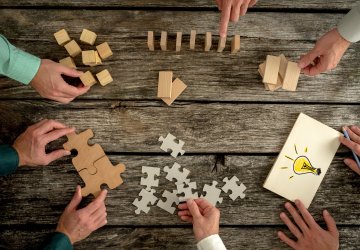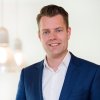
Although it feels like ages ago to me, it has only been four months since we were confronted with the “intelligent lock-down” in The Netherlands. In that time, all over the world countries have been forced to lock down their societies in all kinds of different ways. For most of us, this meant that working in our company’s office was no longer allowed. Suddenly, we had to figure out new routines to do our work and have effective online collaboration with colleagues, while also juggling caring for family members and for some of us monitoring our children during the work day and having a more hands-on approach to their schoolwork. All this within the same square footage called “home.”
It is encouraging to see that many areas are gradually re-opening again and step-by-step many employees are able to re-enter their workplaces. We noticed that during this shutdown period, Real Estate and Facility Management teams were particularly essential in keeping critical business operations running and ensuring that open facilities remained safe and closed facilities were maintained properly. And now we see that the RE & FM teams are playing a critical role in preparing a proper workplace re-entry strategy. To help our Planon user community, Planon released 40 (now 50!) Planon IWMS use cases for a Pandemic response within these processes:
- Visitor Management
- Access Management
- Meeting Management
- Space & Workplace Management
- Cleaning Management
- Indoor Air Quality Monitoring
- Service Request Management
- Stock Management
- Home Office Support
After launch, we had some great online roundtable sessions with our user community from all over the world. Their feedback made us eager to upgrade the first set of use cases in order to provide the latest insights for re-entering workplaces. In this blog, I will share a short recap of some lessons learned and the launch of our updated IWMS use cases for a Pandemic response.
Feedback and lessons learned
Based on the experiences of our customers and our own learning, we discovered some valuable lessons for preparing a safe, compliant and effective workplace re-entry in times of COVID-19. Let me share four of them.
First of all, “trust” is paramount. People need to have trust in the measures being taken within their offices before they are willing to re-enter the work environment. Organizations are putting a lot of effort into this. Therefore, it is important that the implemented measures and solutions can be realized quickly, are easy-to-use and are not threatening or thought of as micro-managing.
For example, we have found that many facility teams perceive the detailed measurement of the occupancy rate per floor as micro-management. Instead, the focus is on building access: knowing who is in the building when. Once people have gained access to the building, organizations rely on people's common sense and responsibility to comply with social distance rules themselves.
Another interesting finding was around “workplace capacity.” Where we thought organizations would want to specifically allocate desks; we now see it is more about planning workplace capacity in general. For instance, on a daily basis the maximum people that are allowed in the office is divided over different groups (employees, visitors, service providers). In practice, this means that workplace users just claim a spot upfront and not a specific desk. Once in the office they pick an available workplace and should check in to indicate that this workplace is being used.
This also has a link to the topic “cost reduction” that is coming back onto the management agenda, especially concerning cleaning. Where the first pandemic responses were mainly emotionally-driven (keep cleaning everything!), now organizations are looking at it in a more rational way and think about only cleaning the places that are really used. This saves costs. But for this to work you need to know what to clean and therefore people must indicate the workplaces they have used. And here you have a paradox: people are not always keen on indicating where they have been, but for effective and efficient cleaning this is a “need to know” for facility teams.
What is perceived as another challenging element is the use of the company’s restaurant or cafeteria. Should these facilities be opened and, if so, do people need to reserve a spot upfront? And should you then monitor the occupancy and usage? These questions seem quite challenging for many organizations. In addition, decision making around this topic is also influenced by regional aspects and health regulations. It seems that in some areas around the world bringing your own lunch is prohibited, where in other areas it is actively promoted.
Sharing is caring: a second set of “Planon Use Cases for a Pandemic Response”
The conversations with our user community on the available “Planon Uses Cases for a Pandemic Response” also sparked some great ideas and inspiration, as customers shared even more possibilities. This has led us to creating an enhanced version.
The updated set of “Planon Use Cases for a Pandemic Response” includes better and less complex configurations, and we have made sure that elements related to GDPR compliance are specifically highlighted. This improves the implementation, adoption, and usability. We also extended existing use cases and added new ones, related to the processes of Lease Accounting, Planned Preventative Maintenance, and Outbreak Control Management. If you are interested in learning more about our use cases, you can download the executive summary, which contains an overview here.
Of course, we will continue to develop these use cases to keep them up-to-date and aligned with our customers’ needs and expectations. And we invite you to share your thoughts and experiences with us as well. Sharing knowledge of what works and what doesn’t during this time can help us all leave our home offices behind and enjoy the experience of being in our workplaces again.





















